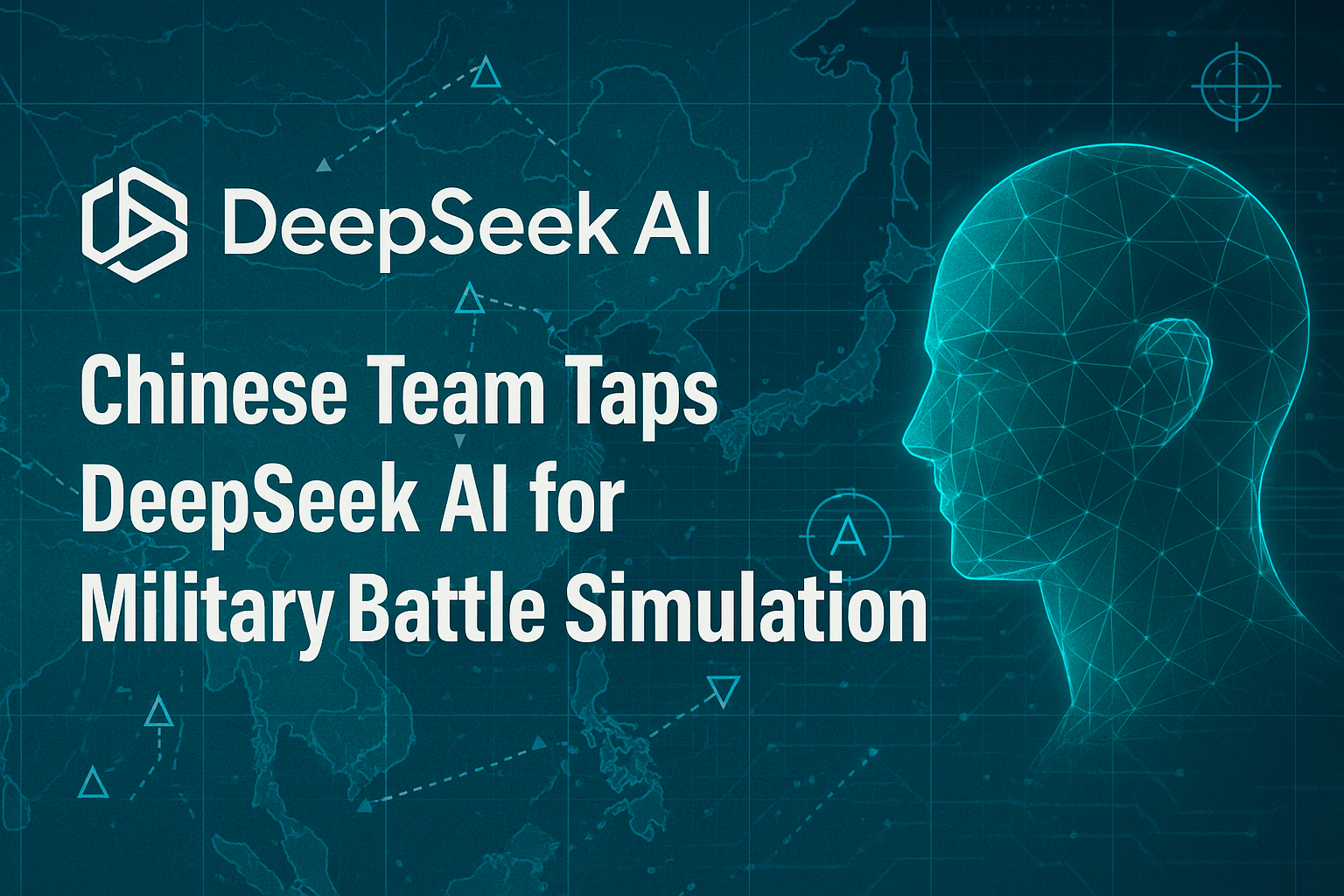A research team at a university in northwest China has used DeepSeek’s artificial intelligence model to generate automatic military simulation scenarios in what has been called a “disruptive” change to how commanders make decisions in battle.
The AI-based simulation system can generate 10,000 military scenarios in just 48 seconds, something that used to take a commander 48 hours to plan, according to Fu Yanfang, who led the team from Xian Technological University’s school of computer science and engineering. They shared their findings on the university’s website on Wednesday.
She said large language models (LLMs) and combat simulation scenarios had redefined the future of war design, and a key advantage of DeepSeek’s LLM was its ability to “deconstruct and reconstruct complex battlefield situations” through training on massive data sets. LLMs are the technology behind generative AI services such as ChatGPT.
Military simulation scenarios mimic real combat situations, including objectives, terrain and forces involved, allowing commanders to prepare for various situations.
They are meant to approximate reality in a virtual environment, but difficulty arises from the complexity of warfare and limitations of human cognition, according to Fu.
“AI now directly produces various geographic environments, force deployments, event logic and operational strategies [for simulation scenarios],” Fu said.
“This is not merely an improvement in efficiency, but a complete disruption of traditional manually crafted scenarios.”
The People’s Liberation Army has highlighted AI’s potential for strengthening its combat capabilities, including military decision-making, warplane design, situational awareness, and precise operational coordination.
Official military mouthpiece PLA Daily published a commentary on Thursday that hailed the superiority of algorithms and their strategic role in what China called the “intelligentised” warfare of the future.
A February commentary in the same newspaper said that large numbers of unmanned intelligent weapons would shape the course of war through AI-driven warfare, and the key to achieving this was algorithms.
“The traditional principle of ‘winning through tactics’ will be replaced by ‘winning through algorithms’. At the heart of algorithms is computing power, which determines combat power,” it said.
Many countries have adopted AI for military use as warfare rapidly evolves towards unmanned operations, multi-domain integration, and intelligent decision-making.
DeepSeek, a Hangzhou-based research start-up, sent shock waves across the globe when it released its R1 model earlier this year. The LLM is cost-efficient and rivals the most advanced technology from global AI giants such as OpenAI and Microsoft.
US President Donald Trump has called DeepSeek a “wake-up call” for the US tech industry, and the Pentagon has invested billions of dollars in AI for defence.
AI has emerged as a key front in the rivalry between Washington and Beijing, and the US is tightening export controls to limit China’s access to advanced hardware and innovations.
Pierre Vandier, the Nato commander in charge of strategic transformation for the transatlantic security alliance, said in February that AI was dramatically accelerating military decision-making, and forces that did not keep up risked being outmatched.
“The speed of operations will dramatically change,” Vandier said, speaking at the AI Action Summit in Paris. “You see that in Ukraine. If you do not adapt at speed and at scale, you die.”
As a dual-use technology, or one that serves both military and civilian purposes, artificial intelligence illustrates the progress in China’s civil-military fusion strategy.
However, regulating the responsible use of military AI, especially in areas such as nuclear weapons systems, remains a topic of global debate and growing international concern.
Source: https://www.scmp.com/





